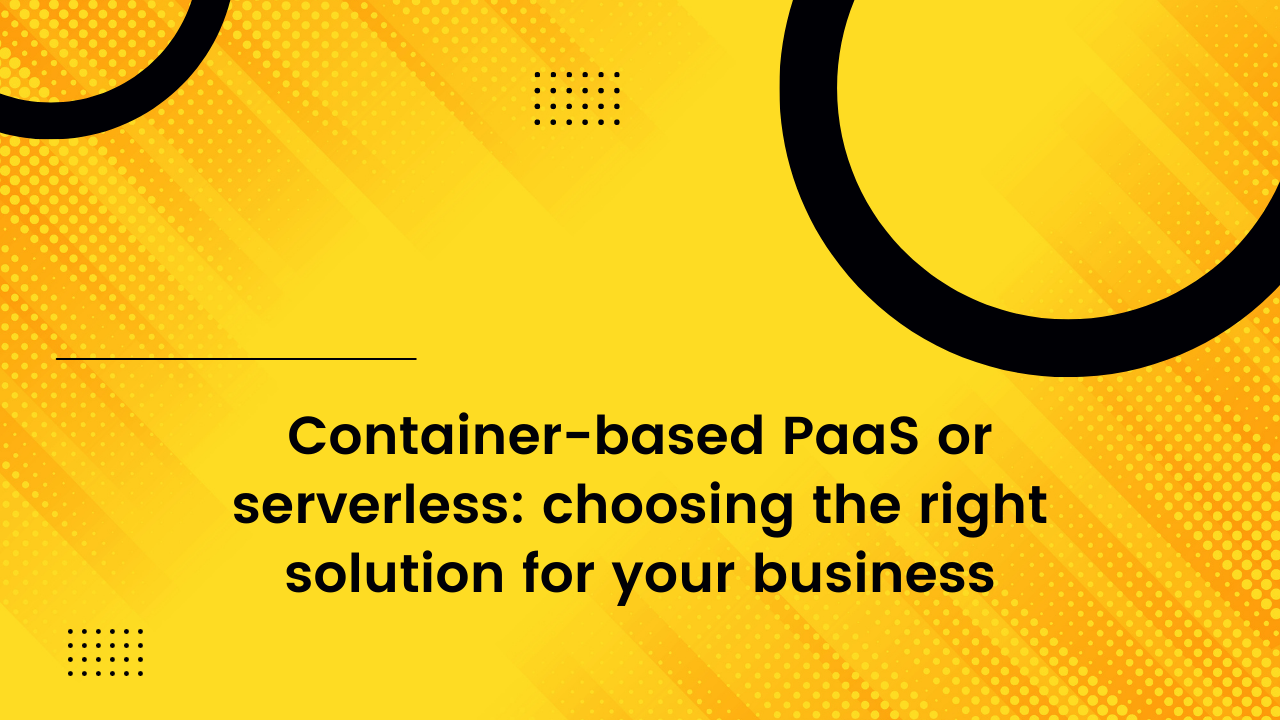
Container-based PaaS or serverless: choosing the right solution for your business
Solutions such as Platform as a Service (PaaS) and Functions as a Service (Faas) that abstract away backend infrastructure management are quickly gaining popularity. Each option has distinct advantages depending on the use case for your business.
Container-based PaaS vs. Serverless
FaaS, a type of serverless computing, and PaaS solutions both abstract away the backend infrastructure management for developers and allow developers to focus on the application code, but there are a few key differences between the two.
The most obvious difference is that serverless computing is completely event-driven. The provider spins up a server when a function is triggered. The provider will then execute that function and then shut down the server, allowing those resources to be allocated elsewhere. PaaS solutions typically consume resources at all times. Because of its simplicity, serverless offers extremely low provisioning time, even less than PaaS solutions.
Scaling is also handled differently between the two solutions. The ability for PaaS solutions to scale up and down as needed needs to be configured, whereas FaaS doesn’t require any capacity planning. It scales readily and easily as required.
Serverless is often better for event-driven applications such as Internet of Things(IoT) scenarios where developers need to respond to sensor messages or stream the processing of data. PaaS may be more suitable for conventional application development, where developers need more control over how certain tasks are done. For example, if you’re migrating a legacy line of business application to the cloud, going the PaaS route may be simpler.
Comparing pricing models
PaaS is typically more expensive than building an application using an IaaS solution. Still, users often find that they save money with PaaS over time, especially when they account for hours spent managing infrastructure. Pricing models for PaaS are often tiered and can vary heavily between cloud providers. Developers typically pay a monthly cost for services, no matter what they use.
With serverless solutions, developers pay only for what they use. Since developers are paying per event invocation, serverless can save significant costs when being used for small workloads. PaaS solutions may be a more cost-effective choice for consistent or high workloads.
How to choose the right solution for your business
There are several questions developers should consider when deciding which solution is right for their business:
- Are there small utility things that can be extracted into functions? Serverless solutions are a great choice for quick tasks like data processing.
- What stack does your team know? With functions, even a junior developer could work in a compartmentalized piece of code.
- What are your performance needs? Because they spin up with each event trigger, functions have a startup time. This means that they consume fewer resources than PaaS, but the cold start may not be optimal for all workloads. With Paas, there is no cold start because the servers are always running.
- Is the workload predictable? Serverless is a great choice for unpredictable workloads because it can easily adjust to meet demands.
Using PaaS and serverless functions together
Developers don’t have to choose one or the other. Often, it’s best to use PaaS and serverless functions together to take advantage of the strengths of each solution. PaaS can house the primary application code that performs things like CRUD operations, authentication, and user accounts. Coders can simplify utility functions that don’t need to be added to the main code that’s deployed to PaaS.



